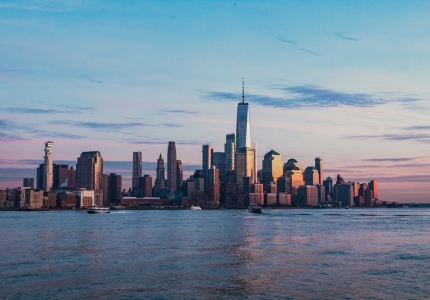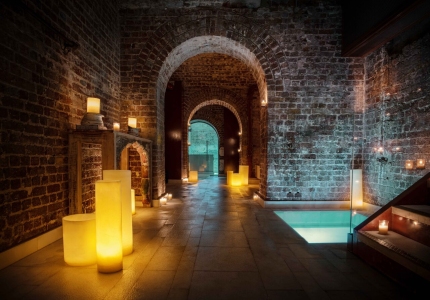Seville is the capital of Andalusia, the southern region of Spain. Host to numerous empires, religions and cultures throughout the previous centuries, Seville remains a city full of magic with a rich history.
Tartessos
According to myth, the city of Seville was founded by Hercules, commonly associated with the Phoenician god Melqart, in a land the Greek called Tartessos, located in the southernmost coast of the Iberian Peninsula at the mouth of Guadalquivir River. Known as Ispal by the Tartessians, Tartessos flourished mainly through trading tin, copper and gold with the Phoenicians. It was destroyed by the Carthaginians in the 3rd century BC as a consequence of the Punic military expansion.
Roman Age
In the course of the Second Punic War, Roman general Scipio Africanus achieved a crucial victory in 206 BC that overthrew the Carthaginians and conquered the Iberian land of Ispal, rebuilding and renaming it as Hispalis. It went on to become a great industrial and market center of the imperial province of Baetica. The great emperor Julius Caesar later granted it status of colony and it became one of the Roman Empire’s most important cities, with a strategic commercial port and bountiful mercantile activity.
Middle Ages
The beginning of the Middle Ages began with the fall of the Roman Empire in the 5th century, with a population decline and large-scale movement of people that were displaced as a result of invasion, war and sickness. The territory of Hispalis would continue to be reconquered by various kingdoms, including the Arian Visigoths who later converted to Catholicism, and the Islamic Muslims.
Visigoths
The East Germanic Visigoths were forced out of their agricultural land in Dacia by the Huns around 376. They revolted against and overthrew the late Roman Empire around the year 378 in the battle of Adrianople and proceeded to settle down in Portugal and Spain. They took over Hispalis, renamed it Spali and played a crucial role in western European affairs during the 6th and 7th centuries.
Muslim Era
Throughout the 8th and 14th century, the territories of Portugal and Spain fell under the rule of the Moors. In 711, the Ummayad caliphate started to conquer Visigoth territory, expanding to become the largest empire at the time. Spali was renamed Ishbiliyya, the Iberian peninsula became a province called al-Andalus with Córdoba as its capital, later creating the Caliphate of Córdoba. Ishbiliyya then became the independent Taifa of Seville. After the Caliphate, Seville became the capital of the Muslim Almoravids and the Almohads until the 13th century and it gained prominence as it competed as a hub of wealth and education with Córdoba.
Late Middle Ages
The Late Middle Ages started in the 13th century with the Castilian conquest of the region of Andalusia in 1247, known as the Reconquista, and extended until the end of the 15th century. Mudéjar and Gothic architecture spread throughout the city with the construction of public buildings and churches. Key events took place during this time, such as the opening of the maritime trade through the Strait of Gibraltar in 1340 as a result of the Battle of Salado, and the Spanish Inquisition, possibly one of the longest and bloodiest religious persecutions in history, which was established by Ferdinand II of Aragon and Isabella I of Castile, having its first tribunal in Seville in 1478.
Modern Age
The Modern Age in Seville began with one of the most important events that changed the course of world history and placed the city in a position of influence and power: the discovery of the New World in 1492 by Christopher Columbus and Queen Isabella I of Castile’s royal decree, granting monopoly to Seville on all Indies trades.
The 17th century flourished with art by Sevillian artists Diego Velázquez, Juan de Valdés Leal and Murillo, and advances in architecture of magnificent buildings, such as the Seville Cathedral, one of the most famous examples of Baroque and Gothic architecture in the world; and the General Archive of the Indies, which housed the most valuable documents that preserve the historic trajectory of the Spanish Empire in the Philippines and the Americas, which was declared by UNESCO as a World Heritage Site.
Unfortunately, Seville fell in steep decline soon after, as a result of a European economic crisis that struck Spain the hardest, finding itself unable to finance wars and maintain a global empire. To make matters worse, river floods and a plague in 1649 emaciated the population, followed by a Catholic revival of transforming the city into religious convents. During the 18th century, the power of Seville and the Casa de Contratación was significantly reduced, and in 1717 the Casa was moved to Cadiz, putting an end to Seville’s Golden Age. The Spanish empire had started to decline.
Contemporary Age
Seville welcomed the 19th century with an epidemic of yellow fever, which wiped out a third of its population, and a very brief occupation by Napoleon’s French army. During 1825 and 1837, important architectural alterations and urban planning took place, and church properties were confiscated, making way for the Industrial Revolution, which would ultimately save Seville from a total decline. Bridges, factories, railways and street lighting were developed, and the 1929 Ibero-American Exposition World Fair prompted the modernization of the city of Seville to receive its expected crowds, where most of the fair buildings were later designated as consulates.
AIRE Ancient Baths Seville
Tucked away in an alley just a few footsteps away from the Cathedral of Seville, in the neighborhood of Santa Cruz, is a 16th century Mudéjar palace house known as Aire de Sevilla, which now serves a relaxation sanctuary. Embracing more than 5 centuries of history, AIRE represents a vestige of the history of Seville, where it served as an ancient Moorish bath, or hamman, with traces of Roman architecture. Numerous bath rooms with water at different temperatures surround a beautiful Andaluz-style courtyard, inviting you to immerse yourself and experience a piece of history that will indulge your senses and relax your mind, body and soul in AIRE Ancient Baths Sevilla..



